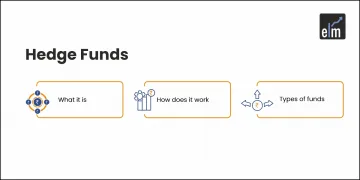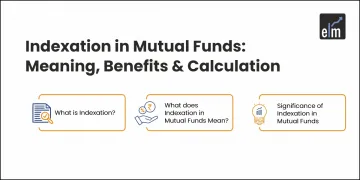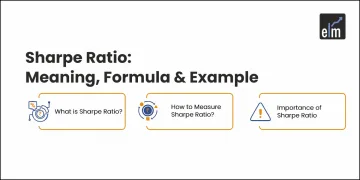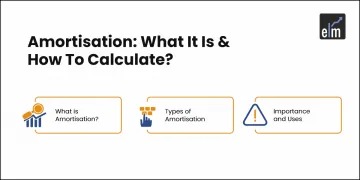Key Takeaways
- Increasing Gold Price: Gold prices in India have seen a phenomenal surge, hitting an all-time high of ₹1,01,078 per 10 grams on MCX. In just one year, prices jumped over 33%, making gold the surprise outperformer compared to equities.
- Reasons Behind: A mix of factors is driving this rally including rupee depreciation, low U.S. interest rates, rising central bank purchases, geopolitical tensions, and a spike in gold ETF demand. Together, they have created the perfect storm for a price breakout.
- Future of Gold: While gold still holds its place as a trusted safe haven, analysts caution against short-term speculation. If global tensions ease or U.S. rates rise, a 30-40% correction is possible. Still, gold remains a smart long-term diversifier in any investment portfolio.
Table of Contents
Once upon a time, every mom in this country told us to buy Gold, and we came up with our confidence-”Stocks me 40% returns bhi milte hai, Gold is Old”.
Guess who was always right!
If you thought stocks were the main character in this investment movie, gold just pulled off an overshadowing side character act.
Gold August futures on MCX recently soared to a new all-time high of ₹1,01,078 per 10 grams.
In the past year alone, gold prices in India soared from around ₹75,000 to nearly ₹1,00,000 per 10 grams, a stunning 33% jump, while the Nifty 50 managed a modest 7-8% return.
However, is gold still the safe haven it has always been praised for, or is this surge merely a passing signal?
Let’s dissect it.
Why Are Gold Prices Increasing?
There isn’t just one explanation. It’s a confluence of changing investor behavior, geopolitical tensions, and macroeconomic changes. Let’s examine the main motivators:
1. The Exchange Rate Between Rupees and Dollars
Gold prices in India are in rupees, but it is traded internationally in US dollars. Therefore, even if global gold prices remain unchanged when the rupee depreciates against the dollar, gold prices in India rise.
For example, if the rupee depreciates in tandem with a 5-6% increase in global gold prices, the domestic price of gold can easily rise by 12%.
2. The United States has Low Interest Rates
The yield appeal of holding dollars or dollar-denominated assets, such as bonds, is diminished by lower U.S. interest rates.
This encourages investors to switch to gold, which is thought of as a hedge against inflation or currency devaluation even though it doesn’t pay interest.
3. More Gold is Being Purchased by Central Banks
Central banks purchased more than 1,000 tonnes of gold in 2023 alone, which is among the highest amounts in decades.
Why? to protect their reserves from geopolitical shocks and diversify away from the dollar. When wealthy institutions begin hoarding gold, prices inevitably rise in tandem with the demand curve.
4. Geopolitical Situation
From the Russia-Ukraine war, ongoing Middle East conflicts, to rising US-China tensions, the global political theatre is anything but calm.
Investors flee uncertainty, and gold has historically been the go-to asset in such times.
5. Safe Haven Demand
When things go south be it pandemics, wars, or trade wars, investors flock to safety. Gold is still that emotional safety net.
Case in point: After President Trump’s steep tariffs on Chinese imports earlier this year, gold witnessed a renewed rally.
Even when markets tumble or inflation bites, gold often stands tall.
6. Rising Demand from Gold ETFs
Gold ETFs are no longer a niche.
In the past five years, gold ETFs in India have tripled in AUM, making it easier than ever for both retail and institutional investors to take exposure. This surge in demand has added fresh momentum to gold’s price rally.
Will Gold Prices Decrease in the Future?
Now, this is where things get interesting.
Not everyone is optimistic about gold’s continued rise. Recently, a Morningstar analyst warned that gold prices could fall 30–40% from current levels, especially if global tensions ease and the Fed raises rates aggressively.
We’ve seen this happen before:
- Between 1980 and 2000, gold lost over 60% of its value.
- From 2013 to 2015, gold corrected nearly 30%.
Also, gold prices in India already dropped from an all-time high of ₹1,01,275 to ₹95,625 per 10 grams (as of the Ahmedabad market), showing how quickly the tide can turn.
So, is gold still a safe haven?
In our view –yes, but with caution.
If you’re holding gold as part of a long-term (10–15 year) diversified portfolio, it still makes a lot of sense. Just avoid getting caught in short-term speculative trades where 30% corrections can really sting.
Final Thoughts
Gold isn’t just an ancient metal, it’s modern portfolio insurance.
But even insurance has premiums.
As investors, the goal isn’t to bet everything on one shining asset. Instead, let gold play its quiet role in your diversified portfolio, balancing risks, adding shine during storms, and giving your portfolio that timeless glint.
Just don’t chase the highs. Stay invested, stay wise.
How do you see gold in your investment journey? Share your thoughts with us below.
FAQs
How are gold prices determined?
Gold prices are influenced by international market rates (in USD), local rupee-dollar exchange rates, import duties, and domestic demand. Factors like inflation, interest rates, and central bank activity also play a significant role.
How are gold prices and silver prices connected?
Gold and silver often move in the same direction due to shared demand drivers like inflation hedging and industrial use. But silver is more volatile than gold prices in India and has wider industrial applications.
Why are gold prices Dubai vs India different?
Dubai has lower import duties and taxes, making gold cheaper than India. India levies a 12.5% import duty and 3% GST, which significantly inflates retail gold prices compared to the Gulf region.
How much is 1 gram of gold worth?
As of today, 1 gram of gold in India costs around ₹9,500–₹10,000, depending on location, purity (22K or 24K), and jeweller margins.
What has been the trend in gold prices over the last 10 years?
Over the last decade, gold has shown consistent long-term growth, with some sharp corrections. On average, gold prices in India have delivered 10–13% CAGR, outpacing inflation and often even equity returns during uncertain times.






